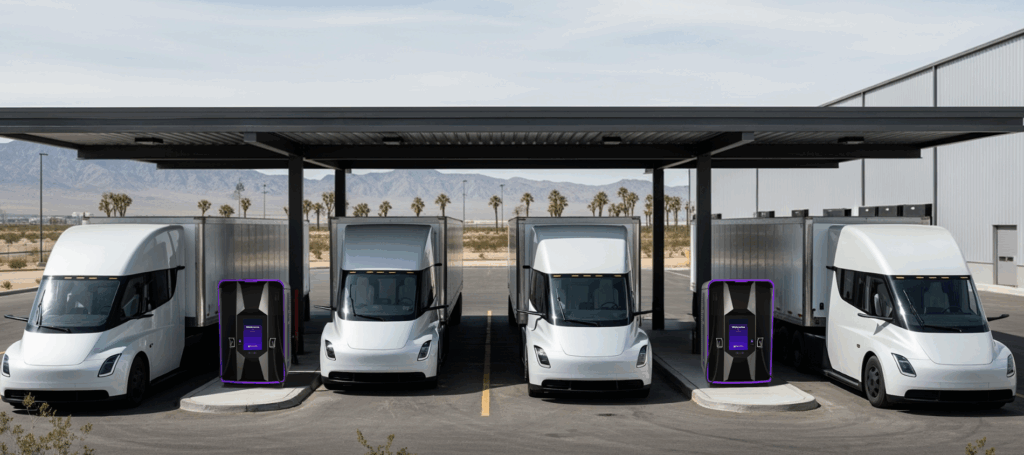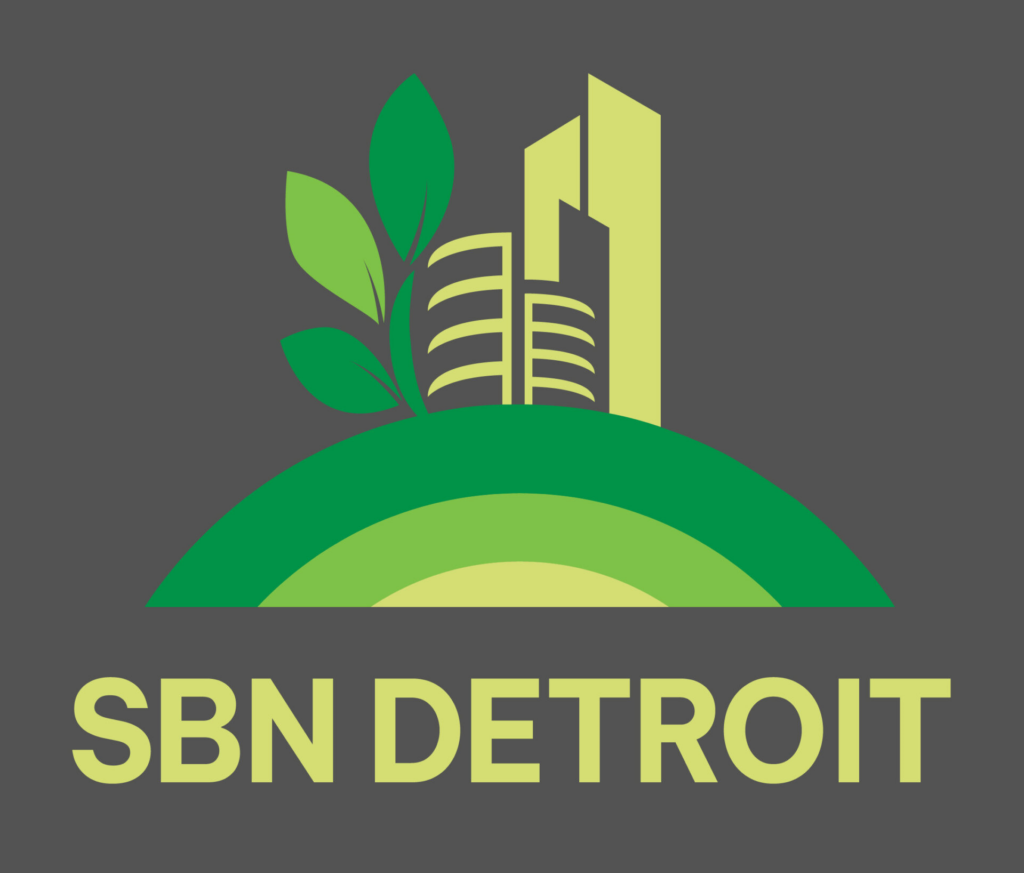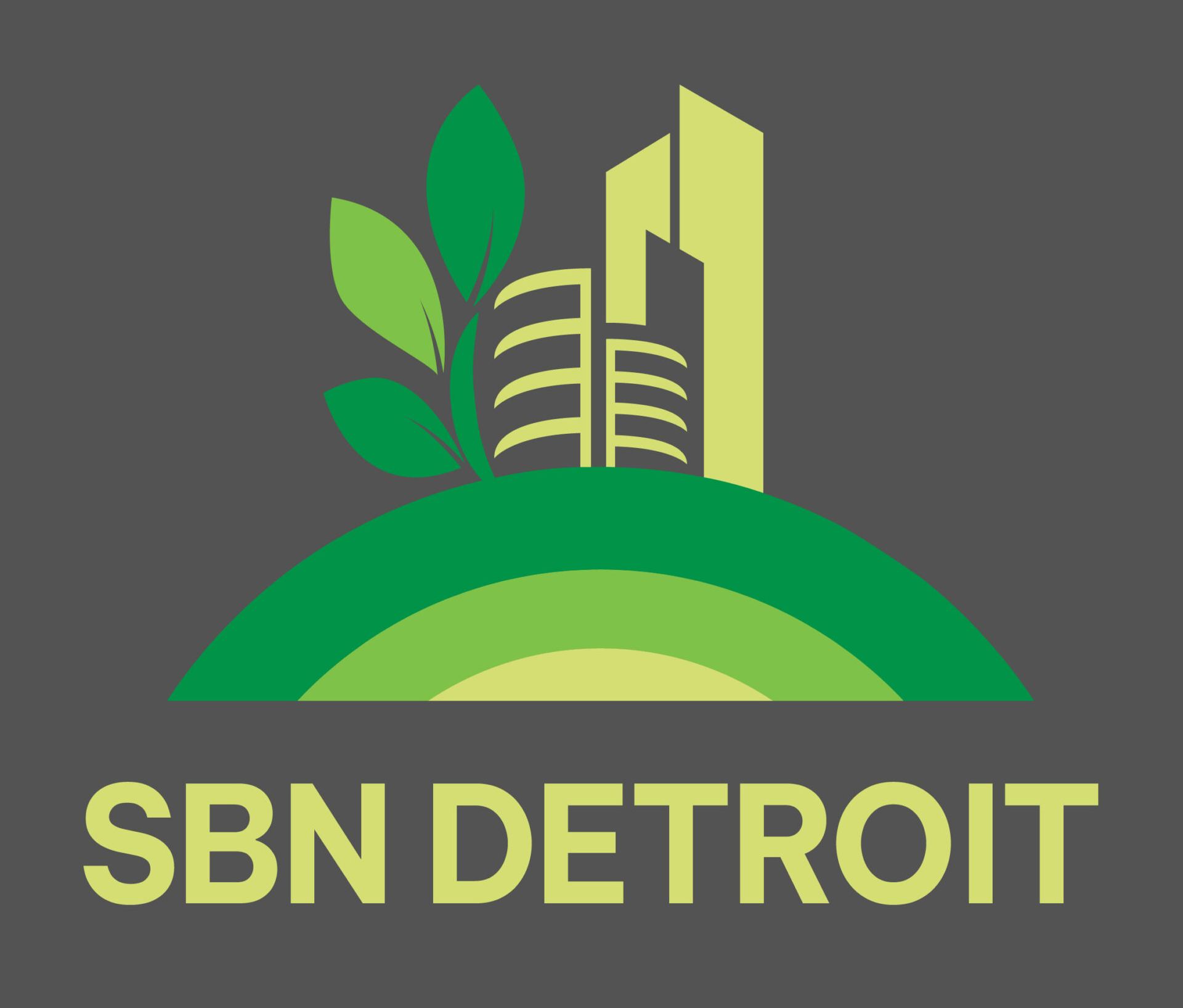Electrifying Eastern Market

Detroit’s Eastern Market is working to become a national model for integrating freight solutions that reduce fossil fuel use and freight operation costs. San Carlos, Calif.-based ElectricFish, a finalist in the Toyota Mobility Foundation’s Sustainable Cities Challenge, was chosen to build battery-integrated fast chargers to power EVs and provide backup energy for Eastern Market. As one of only three cities worldwide chosen for this challenge, Detroit is using the opportunity to position itself as a leader in transportation innovation, this time in clean mobility. SBN Detroit interviewed ElectricFish co-founder Anurag Kamal about why Eastern Market is the ideal proving ground, what this means for the city’s EV landscape, and how this project could influence urban electrification nationwide. Q: What does Detroit’s selection as a Toyota Mobility Foundation Sustainable Cities Challenge finalist mean for its position in EV and clean mobility? A: Being one of just three cities in the world chosen for this program is an achievement in itself. Detroit has always been a center of automotive innovation, and now we’re seeing a new evolution – from internal combustion to electric. The challenges are complex, especially for medium- and heavy-duty freight vehicles, where electrification requires both cost-effective solutions and robust infrastructure. This project is a way to demonstrate what’s possible and draw attention to Detroit’s potential in leading the shift to sustainable transport. Q: What advantages or challenges does Detroit present for innovating in EV infrastructure? A: Detroit’s biggest advantage is its proximity to the automakers and decision-makers. For startups like ours, having industry leaders see our work firsthand is invaluable. But Detroit is also a challenging test bed – the infrastructure in many areas is outdated and upgrading it can be extremely expensive. In places like Eastern Market, where we’re deploying, the cost to modernize could run into the millions. That’s why we’re proving there’s a different, more cost-effective way to build charging capability that can be replicated in other cities with similar constraints. Q: How does the Toyota Mobility Foundation competition help accelerate innovation? A: Funding is a huge part of it. Detroit secured $3 million for the first phase, with additional funding for companies that advance to later stages. Just as important is the collaboration—talking directly with local businesses, understanding their needs, and identifying unique challenges. For example, a mid-sized fishery in Eastern Market could lose thousands of dollars in product during a four- to six-hour outage caused by infrastructure upgrades. Backup energy solutions become not just a convenience, but a necessity. Q: What does success look like for this project? A: In the short term, success means mid-sized businesses in Eastern Market integrating sustainable practices, whether that’s switching to EVs or having accessible charging infrastructure on-site. For small vendors, it means being able to plug in while working in the market. On September 26, we will launch the first Public Fast Charging Hub at an event that’s open to the public. We’ll be able to demonstrate first-hand how businesses can benefit, and we are hoping to get early adoption. Long term, we want Detroit’s project to be a national case study in rapid, cost-effective urban electrification—something that inspires other cities to follow. Q: What are the biggest gaps you see today in EV charging and fleet electrification? A: Infrastructure is the number one gap. There’s a common perception that switching to electric means changing your entire workflow, parking a vehicle overnight for charging, waiting hours instead of minutes. That’s not sustainable for many businesses. The challenge is not just funding infrastructure but also developing alternative technologies and deployment models that make charging fast, flexible, and accessible. Q: As a startup, how do you decide which innovations to prioritize? A: It’s a constant balancing act. We designed a product with two very fast charging ports that can be deployed almost anywhere. But some customers question the need to pay for faster charging when they don’t see the immediate benefit. Others, like Amazon, request larger-scale systems with eight ports. The key is to stay laser-focused on our mission, move quickly, and avoid overextending into too many variations at once. Q: What lessons have you learned about scaling technology in a rapidly changing industry? A: Flexibility is everything. We’ve seen battery pack prices drop from $200,000 to $60,000 in just three and a half years. Locking into long-term agreements without room to adapt can be costly. We make sure our supply agreements account for technological changes, so we can pivot as new, more cost-effective options emerge. Q: What’s your vision for Detroit’s EV charging landscape in 10 years? A: I think we’ll see significant fleet electrification – possibly 10% adoption or more – along with widespread public and private charging. Places that sell fuel today will likely also serve EV drivers. Home charging will be common for homeowners, but public infrastructure will carry the bulk of the load. If projects like Eastern Market succeed, Detroit could be one of the most compelling examples of how urban EV infrastructure can be built quickly, effectively, and in a way that meets the needs of diverse users. Be sure to subscribe to our newsletter for regular updates on sustainable business practices in and around Detroit.
SEMCOG Working to Develop Plan to Reduce Greenhouse Gas Emissions

The Detroit-Warren-Dearborn Metropolitan Statistical Area (MSA) recently was allocated $1 million to develop a plan for reducing greenhouse gas emissions and other harmful air pollution through the US-EPA’s Climate Pollution Reduction Grants (CPRG) program. The plan will cover the MSA’s six counties – Wayne, Oakland, Macomb, St. Clair, Livingston, and Lapeer – as well as Washtenaw and Monroe counties. The Southeast Michigan Council of Governments (SEMCOG), which is the lead agency for Southeast Michigan’s Climate Action Plan, will manage the funds. The plan is in place to help local governments improve and maintain Southeast Michigan’s transportation systems, environmental quality, economic interests, and infrastructure. SBN interviewed SEMCOG Planning Director Kevin Vettraino about what this will involve, how it will roll out, and how it impacts businesses, residents, and communities in Southeast Michigan. Q: Tell us about SEMCOG. A: SEMCOG is the regional planning organization for the seven counties that make up the Southeast Michigan region: Livingston, Macomb, Monroe, Oakland, St. Clair, Washtenaw, and Wayne counties. Our primary mission is to support our local government members, including counties, cities, villages, townships, and educational institutions. We work to improve the quality of the region’s water, make the transportation system safer and more efficient, revitalize communities, and spur economic development. These things shape the areas we get involved in. I like to say we focus on planning for the issues or opportunities that cross geographic or community boundaries, such as roads, rivers, lakes, air, and the economy. Q: The U.S. Environmental Protection Agency allocated $1 million to develop plans for reducing greenhouse gas emissions, and SEMCOG is acting as the lead agency to develop a climate action plan. What will this entail? A: At a high level, the plan will establish community-developed and evidence-based methods to reduce greenhouse gas emissions that will meet the requirements of the EPA and CPRG. One approach is to enhance natural areas that capture carbon. The plan will also integrate extensive stakeholder outreach and input, along with equity considerations, and consider the impact of policies, strategies, and actions from the regional level down to the household level. This work complements the recently adopted Southeast Michigan GREEN: Strategic Framework for Growing our Resilience, Equity, and Economy with Nature, which is an initiative to address some of the region’s most pressing challenges – managing floods, fostering climate resilience, improving community health, and protecting our natural assets – all while creating vibrant places where people want to live and where businesses will thrive. Q: What is the next step and timeframe for action? A: The next step will be launching a task force with the intent to meet at least eight times over two years. Part of the large overarching task force will be smaller focus groups that will cover more specific parts of the plan. The focus groups have not been formed yet, but they are likely to focus on transit, energy efficiencies, EVs and the impacts of the transition, materials management, and nature-based opportunities and impacts. Beyond the focus groups is community engagement. This is critical for success. It’s important for us to have a two-pronged approach here, that being education and data sharing and also public engagement and input. Q: What does community engagement entail? A: Surveys, local meetings, webinars, and other outreach with a lens toward ensuring that the benefits and policies that come out of this work support all residents, including lower-income residents. These people have traditionally been underrepresented and more impacted, and we need to ensure that any actions we take support them and don’t further negatively impact them. Q: How will this impact Southeast Michigan businesses and communities? A: My hope is that through our work there is an education component. In basic terms, we need to make sure we are speaking the same language. There are a lot of terms around climate action such as equity, green infrastructure, etc., and we need to ensure that whether you are a business, community, government entity, or a resident, we all have a similar understanding regarding what these terms mean and why they are important. I hope that business leaders can see themselves within the strategies, policies, and actions that come out of this work and align with them. We all have a role to play in this. This plan will not be the silver bullet that can solve the climate challenges in the region but all of us together can make an impact. From installing a green roof or rain garden to ensuring all people have safe facilities to walk or bike to destinations, whether it’s a sidewalk or bike path or considering nature-based and green infrastructure solutions when putting in a new parking lot or reconstructing a roadway, there are things we all need to be thinking about and doing. Q: What are your main challenges? A: Again, it’s getting a common set of words and a familiar language. It’s also about education and making everyone understand the importance of the plan, and working toward a healthier region, and putting sustainability practices in place to support our climate long into the future. A lot of our work targets dates far into the future, such as 2050, and sometimes it’s difficult to get buy-in when it’s so long-term. The challenge is we need buy-in and immediate action to get to where we want on the horizon. Q: What are the main opportunities? A: First, we have the $1 million funding to help develop a plan, inventory our greenhouse gas emissions, and develop policies – which is great. Through the development of this plan, the region and our communities and businesses will become competitive for an estimated $4.6 billion in EPA grant funding for implementation. Second, if we are able to get folks both in leadership and residents across the region to both understand the importance of the action plan and to be intentional about environmental justice and the allocation of funds and the action to support those directly impacted, that is a great success. Q:


